Rajasthan Part 2: Jaisalmer – and the Thar Desert on Camel
Many travellers head to Jaisalmer with a view to organising a camel trek into the vast Thar Desert, whose edges are not far away. But while romantic images of riding Lawrence-of-Arabia-style over shifting sand dunes at sunset are compelling, new arrivals temporarily forget about camels when they spy the mighty Jaisalmer Fort.
However, I – along with the Englishman, Swiss couple, German doctor and Chinese lady I had met in Jodhpur – couldn't see the fort on arrival, since it was 4am and all was shrouded in darkness.
Dozily we stepped down from our bus and hugged ourselves in the early morning chill as the rucksacks were pulled out from the luggage compartments. Despite the early hour, dozens of tuk-tuk drivers were waiting. They surrounded us and loudly touted guest houses for ‘very good prices'.
Weary and cold, our group of travellers soon accepted an offer and filled two tuk-tuks. Our teeth chattered as the throbbing machines picked up speed and took us into Jaisalmer's dark streets.
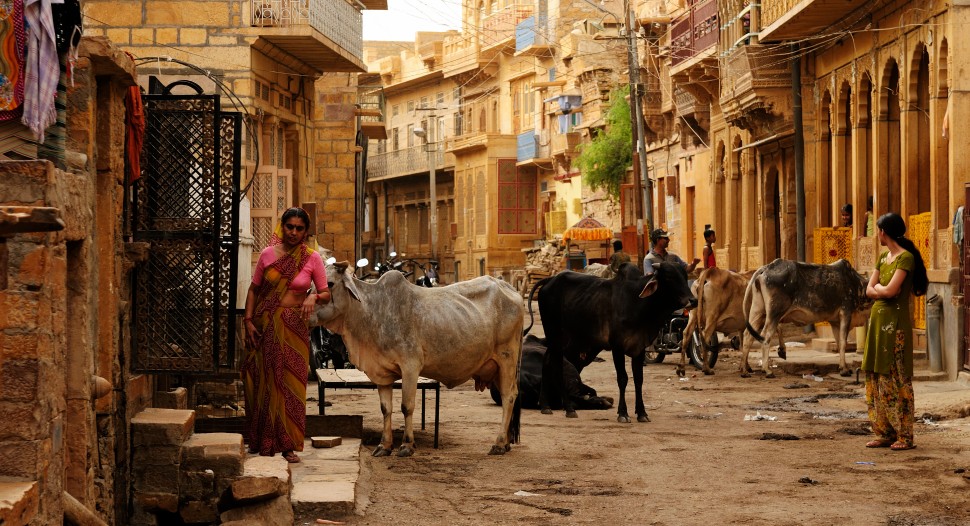 Street in Jaisalmer, India (rchphoto/Bigstock.com)
Street in Jaisalmer, India (rchphoto/Bigstock.com)
We were beckoned into a guest house by some young Indian boys and given tea. We could not check in immediately since nobody had yet checked out. While we were annoyed at this, we decided to stay since another freezing ride in a tuk-tuk did not appeal. We sat on wicker chairs on the guest house roof and waited for dawn, sipping sweet milky chai.
The sky soon became a very dark blue and the chill diminished. An orangey-red split opened up the sky to the east, and the shadowy bulk of Jaislamer Fort loomed to the north; just as in Jodhpur, our guest house was very close to the major local attraction.
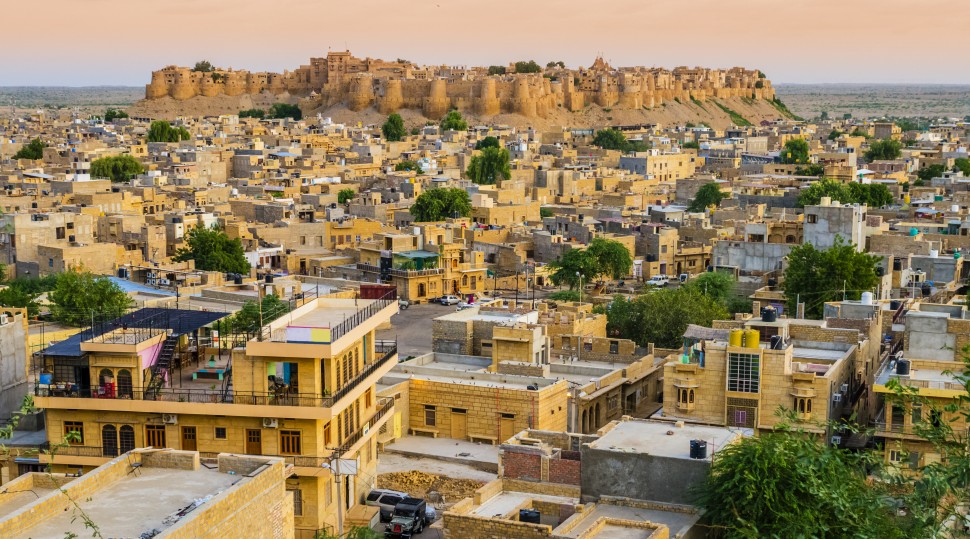
And Jaisalmer Fort really is major. As one of the world's largest man-made structures, it's little wonder that its immense sandstone bulk dominates the city of Jaisalmer. And as the sun rose higher, it was easy to understand why so few invaders had successfully taken the fort; three layers of sandstone wall made any siege a terribly tough prospect.
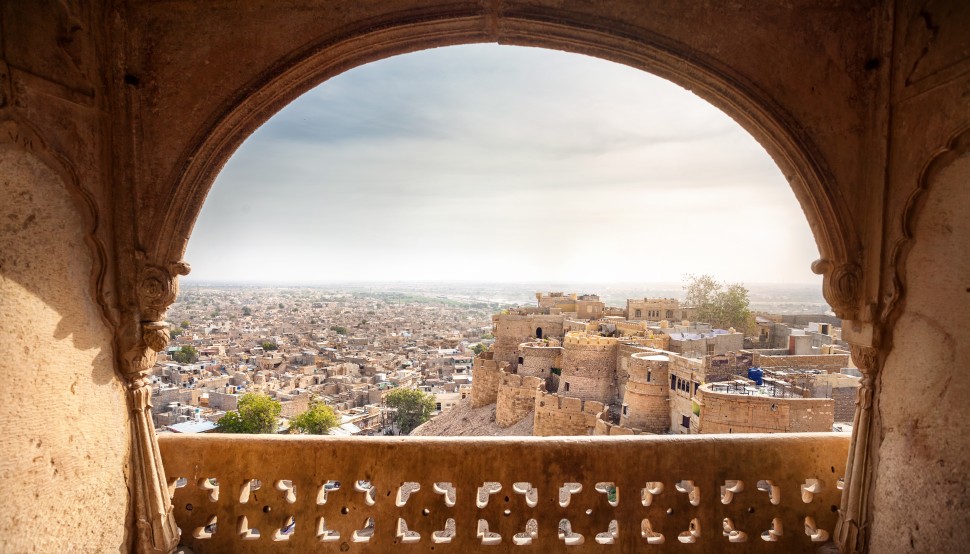 Jaisalmer Fort, India
Jaisalmer Fort, India
But blood was still shed on these ramparts. Ala-ud-din Khilji attacked and took the fort in the 13th century, but not before the Rajput women committed mass suicide – called Jauhar – to evade capture and dishonour at the invader's hands. It was attacked again in 1541 by Mughal emperor Humayun.
With the arrival of the British there was an increase in maritime trade, which meant the land-trade route that Jaisalmer had so prospered from all but disappeared. But with Jaisalmer's decline came more peaceful times, and the city we now know began to spread out from the fort.
Exploring Jaisalmer
Eventually, as outgoing guests rose, ate and departed, we were shown to our rooms. After a rest we reconvened and asked the hotel staff about a camel trek in the Thar Desert. Following a series protracted negotiations with the guest house boss, during which our haggling skills were used to full effect, we bagged ourselves a very good deal.
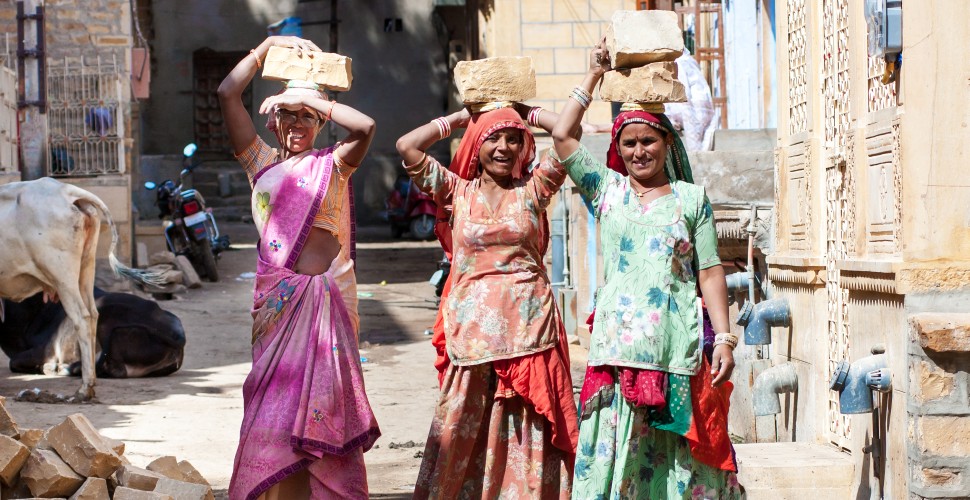 Women in Jaisalmer, India (gnomeandi/Bigstock.com)
Women in Jaisalmer, India (gnomeandi/Bigstock.com)
We would set off early next day. In the meantime we ventured out to explore the now blistering hot, dusty Jaisalmer. We had a variety of tasks to complete, including organising laundry, buying phone SIM cards – and of course exploring the massive fort.
The mighty honey-coloured walls of the structure concealed all manner of alcoves and restaurants, in which we could eat, drink and gaze out over the hazy Thar Desert, towards Pakistan. It was strange that such an enchanting place could have witnessed such violence.
Into the Thar
We boarded an old Land Rover as dawn broke next day and headed out into the desert. After perhaps two hours we stopped. Three small Indians were waiting for us with broad smiles. They would be taking us into the Thar as well as cooking our meals for the next two nights. Beyond them huge camels grazed on sparse, dark green bushes. They were very docile.
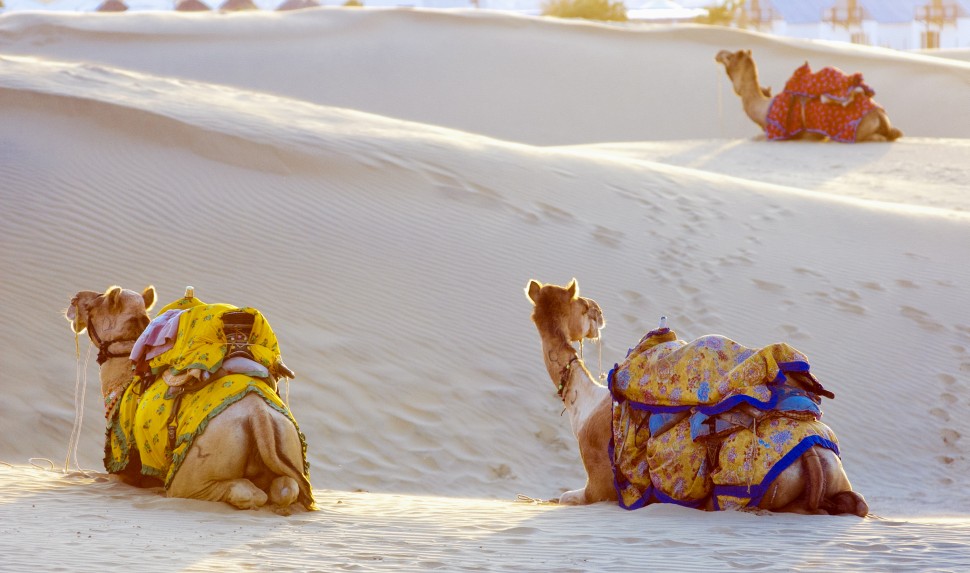
Or so they seemed. The Swiss man was first to get on one of these beasts, but was thrown soon after the camel stood. Luckily he was not hurt, despite the impact on the rocky ground. Undeterred, he got back on.
Having seen the camel unseating the Swiss I was rather nervous when it was my turn to mount my camel – but all went well.
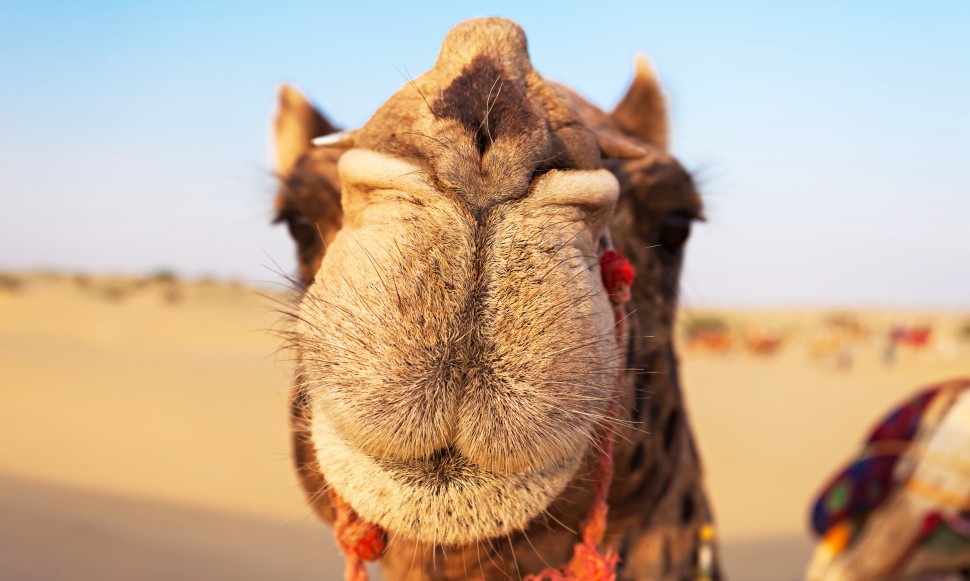
Soon we were all atop our beasts and being led slowly into the desert.
To begin with one feels like a kind of cowboy on an oversized horse, or like Lawrence of Arabia, or perhaps a sheikh. But after three hours of riding these beasts, the romance fades somewhat. We were all complaining about having sore bottoms caused by the continual rocking motion of riding these animals.
But soon we had a chance to rest. We dismounted not long before sunset. The Indians built a fire and cooked us a simple but tasty vegetarian curry with pan-made chapattis. We sat around the leaping flames, chatting about the day's experiences.
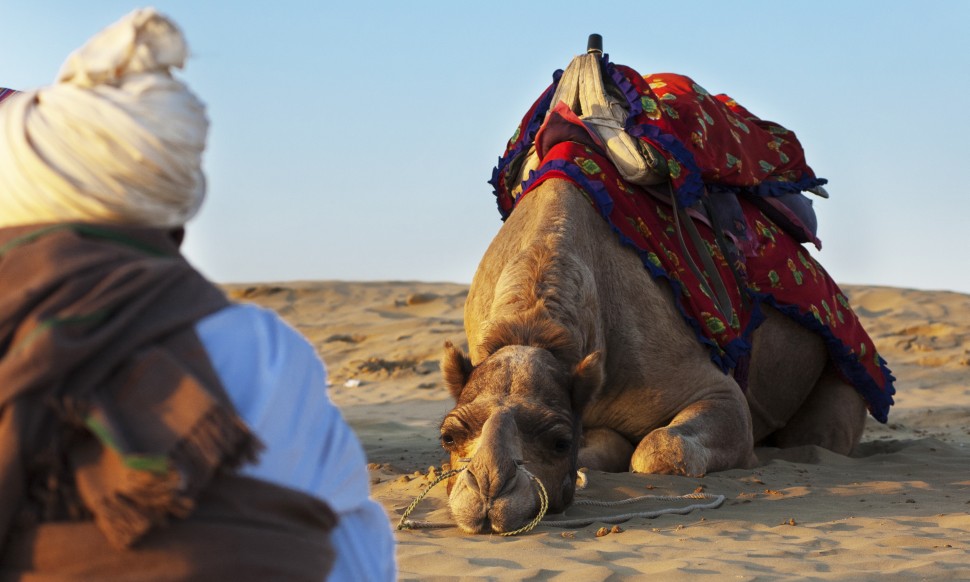 Camel in Jaisalmer, India (gnomeandi/Bigstock.com)
Camel in Jaisalmer, India (gnomeandi/Bigstock.com)
While the Indians had brought a good range of supplies, one thing they didn't have was beer. However, this problem was soon solved when a local man passed by lugging a sack filled with chinking Kingfishers. We greedily bought his entire supply.
We were glad he had turned up, but were intrigued as to how he knew we were here; it seemed to be such a remote area. But his appearance suggested that we were not as alone as we thought; it seemed the man spent his evenings trailing around the dunes looking for trekking parties to sell beer to!
Aside from the fire, darkness soon enveloped us. The black night was dusted with diamond-like stars. We were given a mattress and a heavy blanket each to repel the coming cold; there was no tent. And so we lay side-by-side, gazing at the galaxies above us, the romance of the evening only slightly dampened by fears of snakes and scorpions.
Thankfully, we were spared their deadly kisses.
Get a Quote